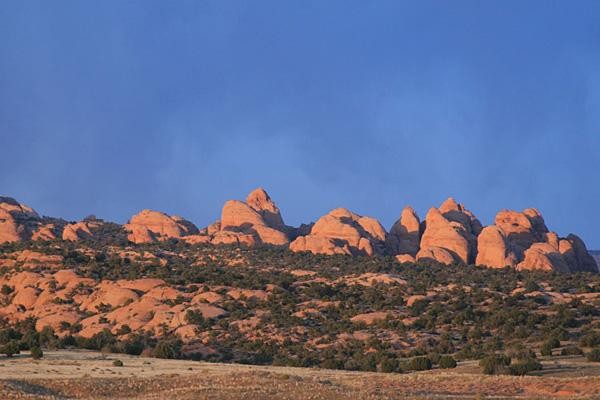24 Hours of Moab future uncertain
Decision pending on fate of long-running race

The 24 Hours of Moab is one of the best known and most popular 24-hour races world-wide. On October 8-9, 2011, the 16th edition of the race was run for what may be the last time. Granny Gear Productions, which promotes the event, is in process of deciding the future of the event.
"I told the racers at the event that I would be making a final determination, one way or the other, by Thanksgiving," said Granny Gear's Laird Knight to Cyclingnews, "so that for my Thanksgiving holiday, I would either be very excited about the next chapter of my life or very excited about bringing the race back in 2012 and beyond."
Knight is in process of handling all the post race-production. "I haven't thrown in the towel yet. I have to get all my vendors paid-off let the financial dust settle and see where I sit. It's not a matter of breaking-even, it's a matter of seeing how much I'm in the whole. Of this I have no doubt."
The man who has been behind several great 24-hour races across the US, including the 24 Hours of Cannaan (which became the 24 Hours of Snowshoe and then the 24 Hours of Big Bear) said the 2011 24 Hours of Moab was run in perfect weather and superb course conditions. Each year, it happens at a venue locally as "Behind-the-Rocks", about 12 miles south of Moab. It's famous for its stunning remoteness and beauty and showcases high desert racing.
"There was tremendous support for the return of the race, and I'm buoyed by all the commitments that folks are making to put a shoulder into making next year happen in a big way," said Knight.
"I can't do it all myself. I'm going to need support from every entity that has a stake in the ongoing success of the race, namely the racers (both pro and amateurs), my suppliers, sponsors, and the media."
What it all boils down to is sustainability. "This race is deeply loved and I'm certainly game for continuing to run it but it has to be financially sustainable. I've cut back on many expenses and held my suppliers to the proverbial fire. Still, I was never in this game to run cheap races. For me, that's not a game worth playing."
Get The Leadout Newsletter
The latest race content, interviews, features, reviews and expert buying guides, direct to your inbox!
"I make sure that everyone who contributes to the race gets paid for their efforts and I spare no expense when it comes to health and safety. Other venues have lower fixed costs. It's no small thing to host 4,000 (people) in the middle of the desert, 12 miles from the nearest utilities. But then the venue and the course are world-class, incomparable in every sense of the word."
The uncertainy of Moab's future comes at a time when there are far fewer 24-hour races globally then there were in its heyday during the late 90s and first half of the 2000s. The number of such races has declined as the popularity of mountain bike100-milers, marathons and stage races has soared.
Recently, the 24 Hours of Moab doubled as the USA Cycling 24-hour National Championships (in 2009 and 2010) although in 2011, the nationals were held in Colorado Springs, Colorado.
Sue George is an editor at Cyclingnews. She coordinates all of the site's mountain bike race coverage and assists with the road, 'cross and track coverage.